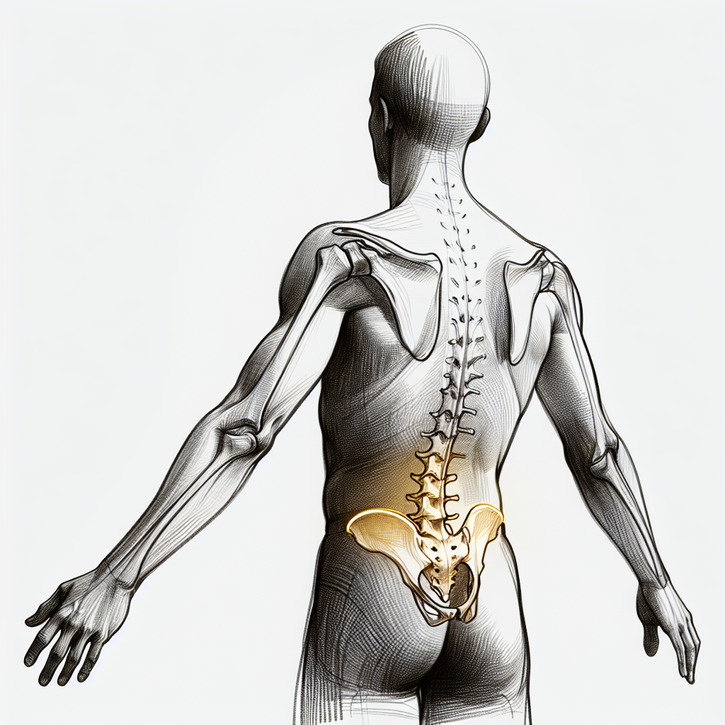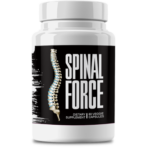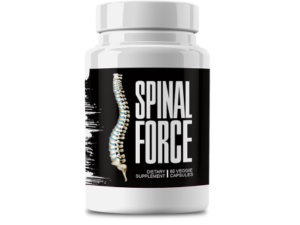This Village-Made Chinese Pain Reliever Eliminates Back And Joint Pain!
Living with Sacroiliac Joint Inflammation: Strategies to Ease Pain and Improve Mobility

Getting Acquainted with Sacroiliac Joint Inflammation
What Exactly Is Sacroiliac Joint Inflammation?
Imagine the joints that bridge your spine and pelvis suddenly acting up – that’s sacroiliac joint inflammation in a nutshell. It’s when those key joints get irritated and swollen, and suddenly you’re dealing with a nagging ache and stiffness that can really throw a wrench in your freedom to move. Often, this irritation builds up over time from daily wear and tear or even a slip-up injury. The key is to catch it early because even if the pain seems like a minor nuisance at first, it’s your body’s way of waving a red flag.
Spotting the Early Warning Signs
At the beginning, the symptoms might be pretty understated—a dull, persistent ache in your lower back or a general twinge in your buttock. You might find that sitting too long or standing up straight for ages makes it worse. In the morning, a bit of stiffness might greet you, and simple daily chores can suddenly feel like monumental tasks. It really pays to be aware of these early hints, as noticing them can be your ticket to halting things from getting worse. Since these cues are sometimes chalked up to “just back pain,” keeping a close eye on them can be crucial for taking timely action.
How It Affects Your Everyday Life
Living with sacroiliac joint inflammation can really change the rhythm of your day. Whether it's struggling to tie your shoes or sitting through marathon meetings, those little pains can quickly pile up and interfere with your daily joy and productivity. It’s not just the physical pain that gets you down—there’s an emotional toll too. The silver lining is that with a better understanding of the condition and some collaborative effort with health experts, you can fine-tune your routine to keep things balanced. Stick with us as we dive into strategies that can ease your discomfort and help you reclaim a more active lifestyle.
Diving Deeper: What Causes Sacroiliac Joint Inflammation?
Where Does It All Start?
The reasons behind sacroiliac joint inflammation aren’t limited to one cause. Repeated stress from physical tasks, injuries from accidents, or even underlying issues like arthritis can be the culprits. Sometimes, it’s that everyday grind—repetitive movements that slowly wear down the joint; other times, a sudden fall or collision kicks off the problem. And to add a twist, factors like bad posture or extra weight can intensify the irritation. Knowing these common triggers can empower you to adopt preventative measures, like fine-tuning your exercise routine or simply being mindful of your posture.
A Closer Look at Your Lifestyle Choices
Believe it or not, some of your everyday habits might be nudging you closer to inflammation. If your job or hobbies involve heavy lifting, bending repeatedly, or sitting still for interminable periods, these could be putting extra pressure on your joints. Plus, a sedentary lifestyle accompanied by poor posture might even lead to a sneaky misalignment in the sacroiliac region. And if regular exercise isn’t part of your schedule, your supportive muscles might be missing that critical boost. By pinpointing these risk factors, you can start making small, healthy tweaks to protect your back and improve your overall mobility.
The Influence of Genetics and Your Surroundings
While your habits definitely have their say, sometimes it’s in your genes – plus, the environment you live in can add fuel to the fire. Some folks inherit a tendency toward joint issues, meaning even a minor bump or strain can stir up big troubles. And environmental challenges, whether it’s extreme weather or the pressures of certain jobs, can exacerbate this vulnerability. Even though you can’t change your genetic makeup, tweaking other aspects like exercise routines or work ergonomics can help you keep things in check. In short, blending a proactive approach with what you’re born with is key to managing this condition effectively.
How Is Sacroiliac Joint Inflammation Diagnosed?
Checking Things Out With a Pro
Diagnosing sacroiliac joint inflammation starts with a good old-fashioned check-up. Doctors will start by listening to your story, looking at your history, and assessing how you move and hold yourself. They might ask you to do some simple movements to pinpoint where the pain is coming from and check for any extra clues that suggest inflammation. These hands-on checks are essential for sorting out sacroiliac pain from other types of back trouble. Remember, being open about what you feel can really help shape a treatment plan that’s just right for you.
Using Imaging Tools: MRI and X-rays
Beyond the physical exam, doctors often lean on imaging tests like MRIs and X-rays to get a clearer picture inside your body. MRI scans are fantastic for capturing detailed images of soft tissues, which can reveal inflammation that might fly under the radar on an X-ray. Meanwhile, X-rays help spot any structural issues or misalignments in your spine and pelvis. When used together, these tools give health professionals the full story, ensuring that what you’re experiencing is accurately diagnosed.
Why Early Diagnosis Matters
Catching sacroiliac joint inflammation early basically sets you up for a smoother road to recovery. If it’s addressed before it turns chronic, you stand a much better chance of rolling out conservative treatments that prevent further damage. Early steps might involve tweaking your daily routine, starting physical therapy, or trying other non-invasive treatments to slow the progression. Not only does this approach help ease the pain sooner, but it also minimizes the need for more intensive treatments down the line. So if something feels off with your joint, getting it checked out without delay can really make a difference.
Exploring Medical Treatments for Sacroiliac Joint Inflammation
Medications to Ease the Pain
When it comes to tackling sacroiliac joint inflammation, medications are often your first port of call. Typically, doctors suggest non-steroidal anti-inflammatory drugs (NSAIDs) to tame the swelling and dial down the pain. Sometimes, you might also hear about muscle relaxants or other painkillers that help soothe tension around the joint. Always stick to the dosage your doctor recommends, and keep an eye out for any side effects. While these medications can provide relief, they’re usually just one piece of a larger puzzle aimed at improving your mobility and quality of life.
Getting Back in Motion with Therapy
Physical therapy is often a game-changer for those dealing with sacroiliac joint inflammation. Customized exercises targeting the muscles around your back and pelvis can help improve alignment and take the strain off your joints. Therapists usually mix in stretching, low-impact aerobic moves, and stability exercises that boost flexibility while reducing stiffness. Not only do these sessions help lessen your discomfort, but they also teach you better ways to handle everyday activities. Regular therapy can pave the way for a more active lifestyle, sometimes even cutting down on how much medication you need.
When It Might Be Time for Injections or Surgery
Sometimes, when other treatments just aren’t cutting it, your doctor might turn to injections or even surgery. Corticosteroid injections, for instance, can work wonders by dialing down the inflammation, making it easier to get moving again and take part in physical therapy. And in those tougher cases where pain persists despite everything, surgery might be on the table as a final option. Of course, each of these routes comes with its own set of benefits and risks, so having a thorough chat with your healthcare provider is key to figuring out what’s best for you.
Shifting Your Lifestyle to Manage the Pain
Embracing Exercise and Stretching
One of the best moves you can make is to lace up those sneakers and build some exercise and stretching into your daily routine. Activities like walking, swimming, or cycling get the blood flowing without overburdening your joints, while regular stretches help keep your muscles flexible and balanced. Focusing on core-strengthening exercises can be especially beneficial, as they give your pelvis and spine the support they need and help ease the pressure on your sacroiliac joint. Even a gentle, consistent workout schedule can go a long way towards reducing pain and rejuvenating your everyday energy levels.
Tweaking Your Diet for an Anti-Inflammatory Boost
You might be surprised, but what you eat can play a big role in managing inflammation. Filling your plate with anti-inflammatory foods—think leafy greens, berries, nuts, and fatty fish—can help dial down the inflammatory processes that lead to joint pain. Cutting back on processed foods, sugars, and unhealthy fats can also make a notable difference over time. While these dietary shifts might not offer instant relief, they work steadily to create a more balanced internal environment, potentially reducing painful flare-ups in the long run.
Making Ergonomic Tweaks at Home and at Work
Sometimes, small changes in your surroundings can have a big impact on managing your inflammation. Upgrading your chair for better lumbar support, arranging your desk for a more natural posture, and simply taking frequent breaks to stand up and stretch can help ease the burden on your joints. Even little adjustments in your sleeping setup—like opting for a firmer mattress or supportive pillows—can keep your spine aligned and reduce unnecessary strain. These practical tweaks are a great way to make sure your daily routine supports your recovery and long-term comfort.
Exploring Alternative Therapies for Relief
Acupuncture and Massage: Hands-On Healing
Many people are turning to alternative therapies like acupuncture and massage as a natural complement to traditional treatments. With acupuncture, fine needles are strategically placed to help restore energy flow and potentially ease pain, while massage focuses on loosening tight muscles and boosting circulation in the affected area. These treatments, when done by skilled professionals, can offer much-needed relief and help in managing inflammation alongside other medical approaches.
Finding Balance with Yoga and Meditation
There’s growing recognition of how powerful the mind–body connection can be when battling chronic conditions like sacroiliac joint inflammation. Practices such as yoga and meditation have been shown to not only improve flexibility and reduce pain, but also help manage the stress that often comes hand-in-hand with chronic discomfort. Yoga classes that cater to back health typically incorporate slow, mindful movements designed to strengthen and stretch the muscles supporting your joint, while meditation can bring a sense of calm and mental clarity. Together, these techniques help build both physical resilience and inner peace.
Assessing the Perks of Complementary Treatments
While the standard medical treatments form the cornerstone of managing sacroiliac joint inflammation, many people find that adding complementary therapies into the mix works wonders. Whether it’s chiropractic adjustments, herbal supplements, or even heat therapy, exploring these options can offer extra relief and support. As always, since the effectiveness of these methods can vary from one person to another, it’s important to keep an open dialogue with your healthcare provider about what might work best for you.








